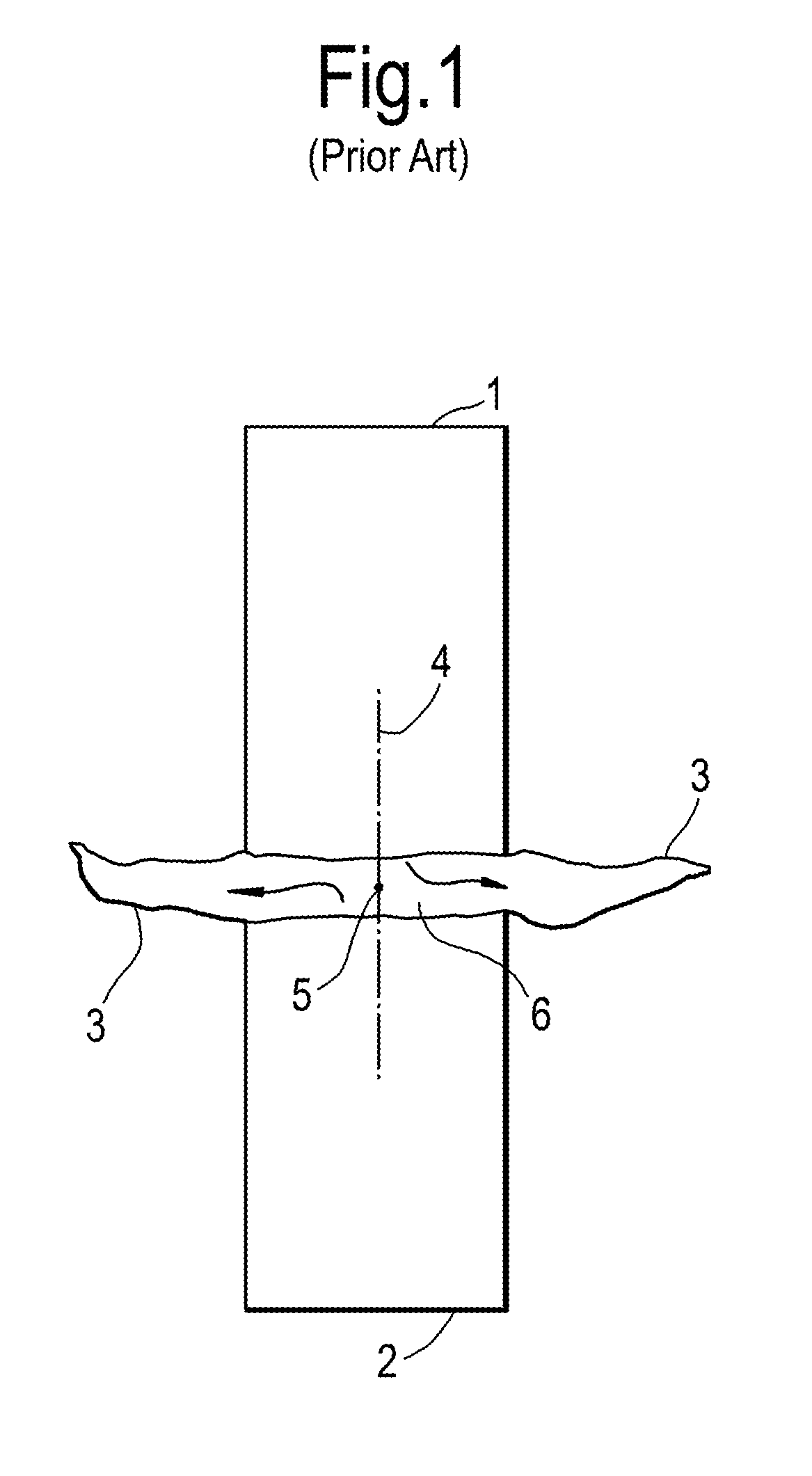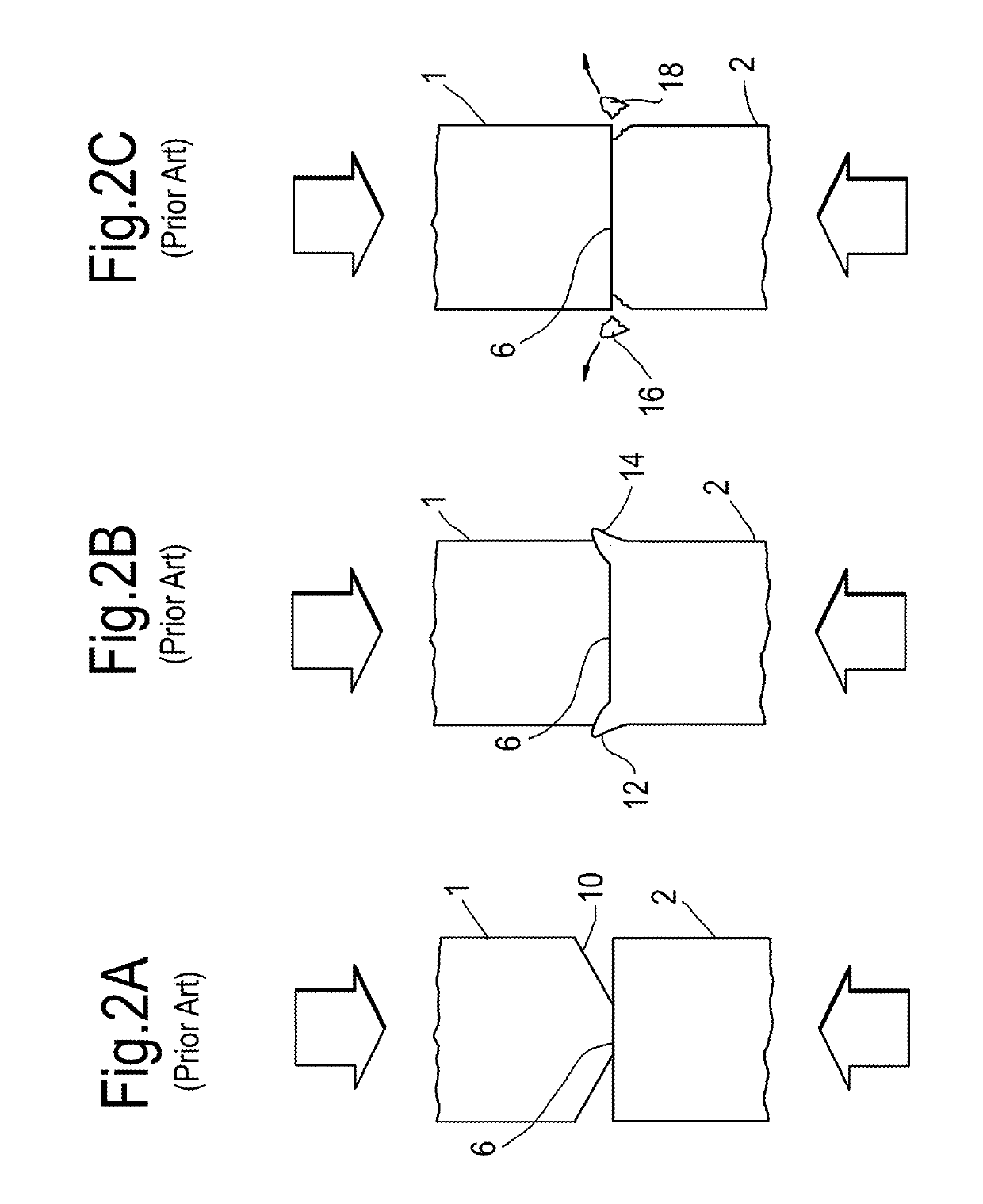Friction welding process
a technology of friction welding and welding process, which is applied in the direction of mechanical equipment, manufacturing tools, turbines, etc., can solve the problems of compromising weld integrity, compromising optimum conditions, and compromising weld integrity
- Summary
- Abstract
- Description
- Claims
- Application Information
AI Technical Summary
Benefits of technology
Problems solved by technology
Method used
Image
Examples
first embodiment
[0092]Referring to FIGS. 3 to 5, a workpiece for use with a friction welding process, according to the disclosure is designated generally by the reference numeral 100.
[0093]The workpiece 100 takes the form of a weld stub 100 and comprises a weld surface 110. The weld surface 110 comprises a central ridge surface 120 extending along the weld surface 110. The central ridge surface 120 extends linearly across a lateral width 122 of the weld surface 110. In the illustrated embodiment the central ridge surface 120 has a lateral width 122 of 4 mm. The central ridge surface 120 is flanked on either side respectively by a first pyramidal surface 130 and a second pyramidal surface 140.
[0094]The first pyramidal surface 130 subtends a first pyramidal angle 132 with the central ridge surface 120. The second pyramidal surface 140 subtends a second pyramidal angle 142 with the central ridge surface 120. The first and second pyramidal surfaces 130,140 together with the central ridge surface 120 to...
second embodiment
[0104]A workpiece according to the disclosure is illustrated in FIG. 8. In this arrangement, the first workpiece 100 is formed from a first material having a first hardness value, and the second workpiece 102 is formed from a second material having a second hardness value, where the first hardness is less than the second hardness. For example, the first workpiece 100 may be formed from a first titanium alloy and the second workpiece 102 may be formed from a second titanium alloy, where the first titanium alloy has a higher hardness than the second titanium alloy.
[0105]Both the first workpiece 100 and the second workpiece 102 have a double pyramidal sectional geometry as outlined above in relation to the first embodiment of the disclosure.
[0106]Each of the first workpiece 100 and the second workpiece 102 comprises a central ridge surface 120A,120B having a lateral width 122A,122B that is flanked on either side respectively by a first pyramidal surface 130A,130B and a second pyramidal...
fourth embodiment
[0120]FIG. 10 illustrates the present disclosure, in which a first workpiece 200 is formed from a first material, and a second workpiece 201 is formed from a second material, with the first and second materials having the same hardness.
[0121]The first workpiece 200 comprises a central ridge surface 220 having a lateral width 222 that is flanked on either side by a first pyramidal surface 230 and a second pyramidal surface 240. The first pyramidal surface 230 subtends a first pyramidal angle 232 with the central ridge surface 220, and the second pyramidal surface 240 subtends a second pyramidal angle 242 with the central ridge surface 220. In this embodiment, each of the first pyramidal angle 232 and the second pyramidal angle 242 is 10°.
[0122]The first pyramidal surface 230 is further flanked by a third pyramidal surface 250 on a distal side of the first pyramidal surface 230 from the central ridge surface 220. The second pyramidal surface 240 is further flanked by a fourth pyramida...
PUM
| Property | Measurement | Unit |
|---|---|---|
| pyramidal angle | aaaaa | aaaaa |
| flank angle | aaaaa | aaaaa |
| width | aaaaa | aaaaa |
Abstract
Description
Claims
Application Information
 Login to View More
Login to View More - R&D
- Intellectual Property
- Life Sciences
- Materials
- Tech Scout
- Unparalleled Data Quality
- Higher Quality Content
- 60% Fewer Hallucinations
Browse by: Latest US Patents, China's latest patents, Technical Efficacy Thesaurus, Application Domain, Technology Topic, Popular Technical Reports.
© 2025 PatSnap. All rights reserved.Legal|Privacy policy|Modern Slavery Act Transparency Statement|Sitemap|About US| Contact US: help@patsnap.com



